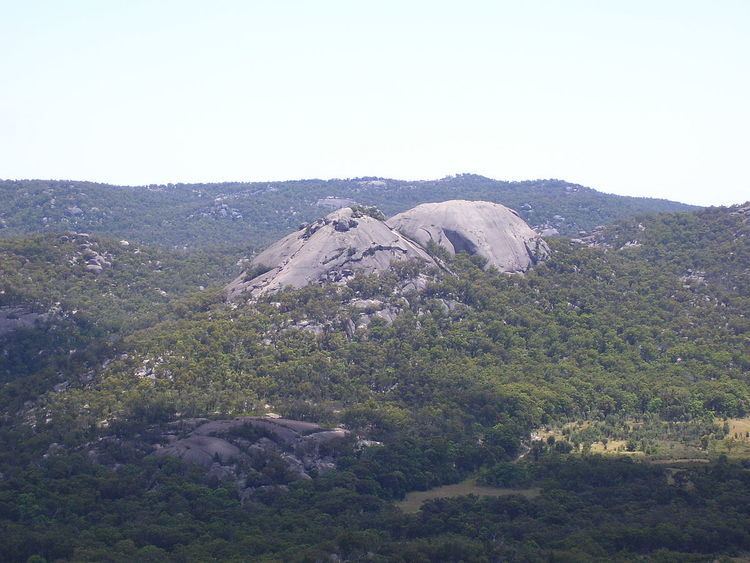Phone +61 7 4684 5157 | Area 117 km² Established October 21, 1966 | |
 | ||
Managing authorities Website Girraween National Park Address Pyramids Rd, Wyberba QLD 4382, Australia Similar Bald Rock National Park, Sundown National Park, Granite Belt, Crows Nest National Park, Ravensbourne National Park | ||
Girraween National Park is an area of the Granite Belt in the Darling Downs region of Queensland, Australia reserved as a national park. Girraween is known for its spectacular flowers, dramatic landscapes and unique wildlife. Bushwalking and rock climbing are the most popular activities in the park.
Contents
Location
The park is situated 40 km south of Stanthorpe. The southern boundary of the park is the state border between Queensland and New South Wales. It is a twin park with Bald Rock National Park, which lies across the border in New South Wales, and features Bald Rock, the second-largest monolith (after Uluru) on the continent. Curiously, South Bald Rock and West Bald Rock lie in Girraween National Park in Queensland, not in Bald Rock National Park in New South Wales.
Features
It features granite landscapes, balancing boulders, clear streams, wetlands, cascades and open forest. The granite outcroppings, such as the Pyramids and Castle Rock at 1112 m, dominate the local scenery. The park contains many kilometres of graded walking trails to the park's major features like the First Pyramid, Second Pyramid, The Sphinx, Turtle Rock, Underground Creek, the Eye of the Needle and Mount Norman - the highest point in the park at 1267 metres. Fire trails can be followed when venturing into the southern and eastern sections of the park. The park has a temperate climate. During winter snow can fall in the area.
Fauna and flora
The park has abundant fauna, including some that are rarely seen elsewhere in Queensland, such as the common wombat, spotted quoll, lyrebird and the turquoise parrot.
The area is also noted for its diverse flora. The eucalypt forests and heathlands provide habitat for abundant birdlife. In spring, many wildflowers bloom, this led to its being called "place of flowers" in the indigenous language. The area is the only place where the Wallangarra whitegums grow.
In 1992, Taronga Park Zoo staff discovered the rare Bald Rock Creek turtle. The species has only been found within a ten km stretch of the creek.
